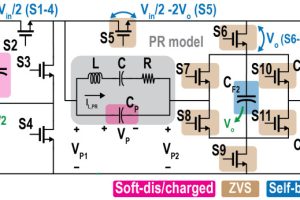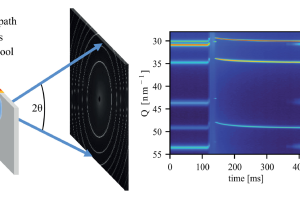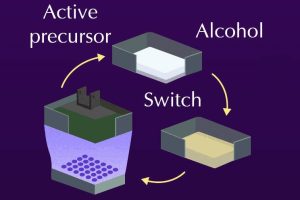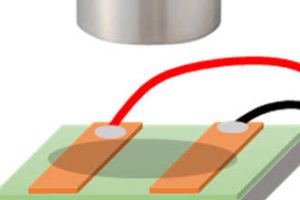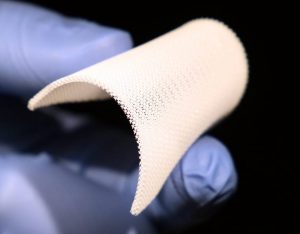
The materials are elastomeric and, via a set of printable topologies, the technique allows the creation of materials generating electric charge in response to incoming forces and vibrations from any direction, where voltage response can be magnified, reversed or suppressed along chosen axes.
“We have developed a design method and printing platform to freely design the sensitivity and operational modes of piezoelectric materials,” said researcher Xiaoyu Zheng. “By programming the 3D active topology, you can achieve pretty much any combination of piezoelectric coefficients within a material, and use them as transducers and sensors that are not only flexible and strong, but also respond to pressure, vibrations and impacts via electric signals that tell the location, magnitude and direction of the impacts within any location of these materials.”
The piezoelectric printing inks contain piezoelectric nano-crystals and ultra-violet-sensitive gels, which are extruded then solidified using UV light.
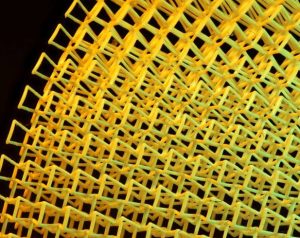 Sub-100μm features are possible. “We can tailor the architecture to make them more flexible and use them, for instance, as energy harvesting devices, wrapping them around any arbitrary curvature,” said Zheng. “We can make them thick, and light, stiff or energy-absorbing.”
Sub-100μm features are possible. “We can tailor the architecture to make them more flexible and use them, for instance, as energy harvesting devices, wrapping them around any arbitrary curvature,” said Zheng. “We can make them thick, and light, stiff or energy-absorbing.”
Sensitivities five times higher than flexible piezoelectric polymers is claimed, and the stiffness and shape of the print can vary widely, from a thin sheet resembling a strip of gauze to a stiff block. “We have a team making them into wearable devices, like rings, insoles, and fitting them into a boxing glove where we will be able to record impact forces and monitor the health of the user,” said Zheng.
The team has demonstrated printed piezoelectrics wrapped around curved surfaces, and printed objects that combine strength and sensing, including a bridge and a hydrophone.
“Traditionally, if you wanted to monitor the internal strength of a structure, you would need to have a lot of individual sensors placed all over the structure, each with a number of leads and connectors,” said fellow researcher Huachen Cui. “Here, the structure itself is the sensor – it can monitor itself.”
There is a video, and a paper in Nature Materials: ‘Three-dimensional printing of piezoelectric materials with designed anisotropy and directional response‘.
 Electronics Weekly Electronics Design & Components Tech News
Electronics Weekly Electronics Design & Components Tech News
